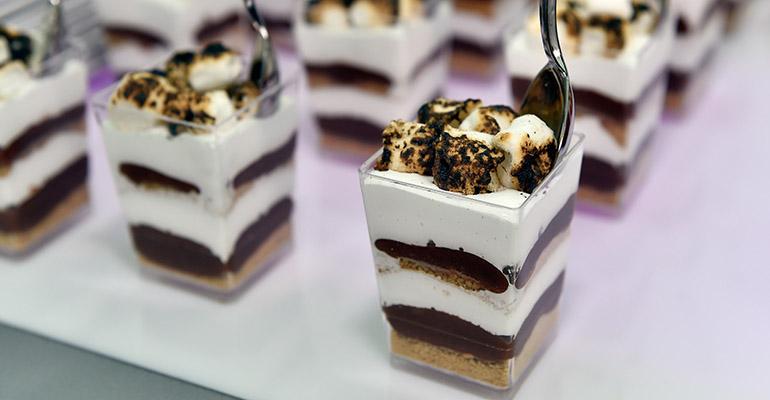Restaurant owners have a catering gold mine right under their noses. A customer database, overhead already paid, food that your guests love, staff, recipes, etc., are all in place. After you have established a catering menu, a separate catering phone line, a separate catering email address, and you are ready for your first catered event, you’re ready to go. But where do you start advertising your catering services? It starts with your restaurant customer.
Step One: After your guests have been seated, water served and food order taken, immediately bring a small bite-size appetizer you can call your “welcome app.” It isn’t food that available on your regular menu, but only on your catering menu.
Step Two: After dessert is ordered, bring a small bite of dessert. Same concept. Not available at the restaurant, but definitely through catering.
Step Three: When the check arrives, place it in a mini folded catering menu.
The total cost for this advertising is $.48 per two people. It is a phenomenally inexpensive investment. If you can’t afford $.48, raise the prices at your restaurant. I can assure you that none of your competition is doing this. You have the edge the minute you decide to start catering.
Once you let your restaurant customers know that you offer catering, you will start fielding inquiries from potential new catering clients. Most people get estimates from three or more caterers for one event. In the beginning, you don’t have a chance to differentiate your catering from the competition with your food. Most new clients contact my catering company by email, asking for a written quote. That’s a scary thought. A single piece of paper or a click can earn you or cost you $5,000. So how can you differentiate yourself from your competition during this phase?
Here are some effective ways to make an impression and smoke the competition:
• Reply to any email inquiries as soon as possible. Two hours is a great goal, but definitely no more than 24 hours later.
• If there is a phone number on the email, call the potential client immediately.
• Follow up your email/phone call with catering information, including pricing. Do not overload them with information. If you send more than four pages of information, potential clients will be confused and go with a company that uses a simpler approach.
• Use good quality color pictures in your promotional materials to showcase your food and presentation. A bad photo might suggest that your food is not the best.
• When sending an email, my catering company also includes a link to a short video showing some of our work with the printed promo material attached. Even though we have lots of pictures on our website, we still send the video. It always makes an impression.
• If the potential event has a large budget and you really want the job, pull out all the stops. Call the client, ask if they are in the office for the rest of the day, send a courier to them with your information (color, not black and white) with a small sample of food. Do not send a plastic tray of any food—that’s boring. The food can be simple, but the presentation should make a statement. Include a personalized note.
• Follow up on your initial email within 24 hours.
• Suggest a meeting with the client within 48 hours. Give them your personal cell phone so they can easily reach you. The quicker you meet in person, the higher your closing rate will be.
• If possible, meet at the venue where the event will take place. If the event is in their home and you meet at their home instead of at your restaurant, your closing rate will skyrocket!
• After your meeting, send them a proposal within 48 hours.
• Follow up within 24 hours of sending the proposal.
One final note about the proposal. If it’s a large event and you really want the job, be creative and hand deliver your proposal. One year we were bidding on an event for 1,000 guests. It was the ground breaking for a very large science museum in Dallas. The event was going to be held in a huge tent on the grounds of where the museum would be built. The theme of the groundbreaking dinner was “Let the Construction Begin.” The selection committee had narrowed the field of caterers to two companies. I really wanted the job and we did our very best to be creative. The printed proposal was attached to construction blueprint paper and rolled up as if it was a copy of the building blueprints. The blueprints were then placed in a yellow tool box and hand delivered by one of my staff who wore worker’s overalls, a hard hat, work goggles, and a construction worker’s belt pouch complete with hammer and tape measure. I still hear compliments to this day about how we delivered that proposal.
You know your food and service are better than your competition. Show the same degree of detail and “competitive email thinking” when responding to a new potential catering client. Don’t let a single email lose you $5,000 in profits.

